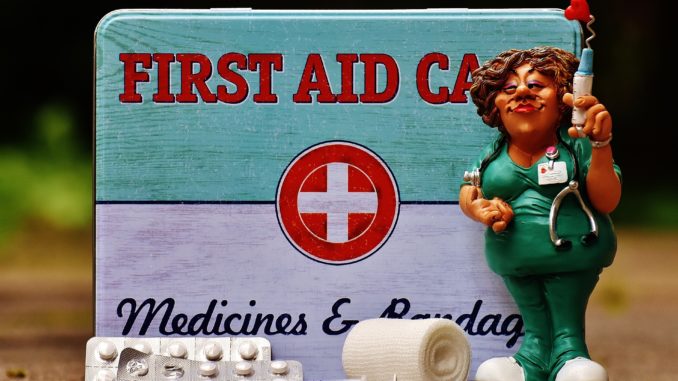
It’s very important to know electric shock treatments. Electrical hazards cause more than 300 deaths and 4,000 injuries in the U.S. workplace each year. At home, many children and adults can be killed or injured by downed power lines, accidental contact with floating phases or dangerous situations around the home. Because electric shock is so common, it is good to be familiar with electric shock treatments in the case that you are in a situation where someone falls victim to electrocution.
There are many different causes of electric shocks. Low voltage electricity of 500 watts or less, typically won’t cause severe injury. If exposure is higher than that, it means the victim actually became a conductor in an electric circuit. This can cause significant tissue damage.
Common causes of electrical shock can include household appliances, electrical chords and extension chords that are not up to code or not safely installed. These can especially be common in electrical shock in children. Outlets are responsible for 15% of injuries. Lightning causes an average of 35 deaths a year.
Symptoms of Electrical Shock
 There are a variety of injuries one can sustain if they suffer from electric shock. Here are some things that people may be suffering with:
There are a variety of injuries one can sustain if they suffer from electric shock. Here are some things that people may be suffering with:
Burns: Burns are usually most severe where contact was made with the electrical source. Usually this would be the hands, heels or head. Burns can also occur on the mouth, resulting from someone biting an electrical cord. Burns may mark the entrance where electricity entered the body and can sometimes signify that internal damage occurred.
Muscle Contractions Leading to Injuries: When a person suffers from electrical shock, they often respond with violent muscle contractions. These muscle contractions can, in turn, cause broken bones, spinal injuries and even cardiac arrest.
When to Seek Medical Care for Electrical Shock
Obviously, some cases of electrical shock are more severe than others. In general, any high voltage electrical shock should be treated immediately. If you are unsure of how high the voltage of the electric shock was, it is always better to err on the side of caution and seek treatment. Here are some other cases in which you might want to seek medical care for immediate electric shock treatments.
- If it has been over 5 years since the victim’s last tetanus shot.
- If burns resulting from electric shock are not healing.
- If burns are showing signs of increasing redness, soreness or drainage.
- If the victim is more than 20 weeks pregnant.
- If there is numbness, tingling, paralysis or vision, hearing or speech problems or any other worrisome symptoms.
Electric Shock Treatments
If you are in a situation where someone is suffering from an electrical shock, here are some steps you might want to take in electric shock treatments:
Separate the person from the power source: This can include unplugging an appliance if the cord is not damaged, or shutting off power via the circuit breaker, fuse box or outside switch. If you are unable to turn the power source off, stand on something dry and non-conductive like dry newspapers, a telephone book or a wooden board. Then try to separate the person from the current using a non-conductive object like a wooden or plastic broom, chair or rubber doormat. If high voltage lines are involved, you may have to call a power company to shut them off.
Do CPR: Once the victim is separated from the power source, CPR may be necessary. This is necessary if a person is not breathing or does not have a pulse. CPR should be performed by those who are trained and accredited. For those who are not trained, hands only CPR can be effective. That means uninterrupted chest compressions of 100-120 a minute until the paramedics arrive.
Treat Other Injuries: If a person is bleeding, elevate the area that is bleeding if it is an arm or leg. If there are severe burns, call 911 immediately. Minor burns can be treated with cool water or compresses. Burns should then be covered with clean gauze, cloth, or a non adhesive bandage. Butter or ointments should not be used as they can cause infection.
Wait for Medical Help To Arrive: They will be able to check the victim for fractures, dislocations and other injuries. They will also be able to determine if the person needs to be admitted to a hospital or burn center. They may need to follow up with electric shock treatments including an ECG, blood tests, a urine test, CT scan or MRI.
Prevention of Electrical Shock
 Of course the best way to deal with electrical shock is by preventing it from happening at all. Here are some tips for preventing electrical shock.
Of course the best way to deal with electrical shock is by preventing it from happening at all. Here are some tips for preventing electrical shock.
- Do not allow children to play with electrical cords.
- Limit the use of extension cords and make sure the cords you are using are correctly rated for the equipment it is being used with.
- Use outlet coverings to prevent small children from playing with electrical outlets.
- Update old outlets to grounded (three prong) systems. Replace outlets that are located near water with fused (GFCI) outlets.
- Older children can be at risk for injuries. Caution them not to play near train tracks or power towers.
- Adults should use caution when working with electricity and make sure all power supplies are off before commencing work. Avoid mixing water and electricity.
- During thunderstorms, you can protect yourself by seeking shelter and crouching low if caught outdoors. Stay away from trees, metal objects and water. Lightning strikes are most likely to occur during the month of July and between the hours of noon and 6 PM.
Although it is impossible to eliminate electrical shock, it is important to know how to prevent it from happening. It is also a good idea to be familiar with electric shock treatments, to minimize injuries and fatalities that may occur from contact with electricity. Good luck in keeping yourself and your family safe.

